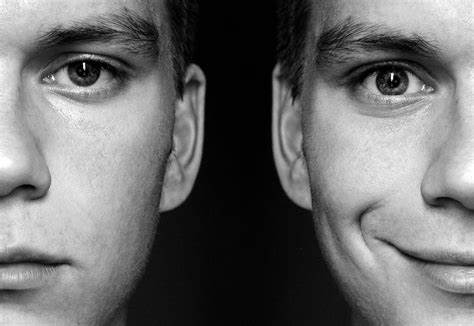

wordpress-seo domain was triggered too early. This is usually an indicator for some code in the plugin or theme running too early. Translations should be loaded at the init action or later. Please see Debugging in WordPress for more information. (This message was added in version 6.7.0.) in /home/sehatnagar.com/public_html/wp-includes/functions.php on line 6114
When someone with affective bipolar disorder feels extremely exuberant and confident, they are said to be “manic.” These emotions can also include impatience and rash or risky decision-making. Depression, also known simply as depression, is a mental disease defined by persistently low mood for at least two weeks. You may feel gloomy or hopeless when you are depressed, and you may lose interest or pleasure in most activities. When your mood switches to mania or hypomania (a milder form of mania), you may feel ecstatic, energized, or particularly irritable. These moods range from excessively “up,” to extremely “down,” sad, indifferent, or hopeless conduct.
Every year, roughly 5.7 million adult Americans, or about 2.6% of the U.S. population age 18 and older, suffer with affective bipolar illness. The average age for bipolar disorder is 25 years, while the condition can begin as early as childhood or as late as the 40s and 50s.
A person with affective bipolar disorder may experience identifiable manic or depressive episodes, but they may also experience extended periods sometimes years without symptoms. A person can potentially experience both extremes at the same time or in fast succession. Severe manic or depressive episodes of bipolar disorder may entail psychotic symptoms such as hallucinations or delusions. These psychotic symptoms usually mirror a person’s extreme mood.
Bipolar disorder is a condition in which persons have had one or more episodes of mania. Most people with bipolar I will experience episodes of both mania and depression, while depression is not required for a diagnosis. Manic episodes lasting at least 7 days Depressive episodes are common and usually last at least two weeks. Depression episodes with mixed features are also possible. When symptoms of bipolar disorder first develop, most persons are in their teens or early twenties. Almost everyone who has bipolar I disorder before the age of 50 has it.
You’ve had at least one major depressive episode and one hypomanic episode, but no manic episodes. It is a subtype of bipolar illness in which persons have depressed periods that alternate with hypomanic episodes but never have a “full” manic episode. Many persons with bipolar type 2 diseases are depressed for the most of their illness. Bipolar illness symptoms might include depression, anxiety disorders, obsessive-compulsive disorders, personality problems, and even schizophrenia.
Cyclothymic disorder is a mental condition. It is a moderate form of bipolar disorder (manic depressive illness) in which a person has mood fluctuations that range from mild depression to powerful emotions over a period of years. The low and high mood fluctuations are never as severe or as long as major depressed or complete manic episodes. Cyclothymic disorder manifests lesser symptoms than full-blown bipolar illness. The symptoms include emotional highs and lows. Cyclothymic highs include signs of a heightened mood. The lows are characterized by mild to moderate depression symptoms.
Episodes of severe mood characterize all types of bipolar disorder. The highs are referred to as manic episodes. The lows are referred to as depressive episodes. The fundamental distinction between bipolar 1 and bipolar 2 disorders is the degree of each type’s manic episodes. A person with bipolar 1 will have a full manic episode, whereas a person with bipolar 2 will only have a hypomanic episode (a less severe phase than a full manic episode). A person suffering from bipolar 1 may or may not have a major depressive episode, but a person suffering from bipolar 2 will have a severe depressive episode.
Bipolar disorder can affect everyone. However, like with other diseases, some people are at a higher risk than others due to a variety of circumstances. The following are the most likely risk factors:
Children with relatives who have other psychiatric conditions, such as anxiety disorder or attention deficit hyperactivity disorder (ADHD), are more likely to develop bipolar disorder; similarly, people with a family history of other conditions, such as autism and schizophrenia, are more likely to develop bipolar disorder.
Both men and women are affected by this medical illness, however in slightly different ways. Men, for example, are more likely to suffer from early-onset bipolar disorder, which is frequently seen as a more debilitating type of the disorder. Women are more likely to suffer from the rapid cycling kind, which involves four or more manic or depressed episodes each year.
Bipolar disorder may potentially have some roots in brain abnormalities. A meta-analysis of 30 scientific studies found that persons in the early stages of the condition have abnormalities in certain brain areas such as the hippocampus, amygdala.
It is fairly uncommon for someone suffering from bipolar disorder to also deal with alcoholism. People with bipolar disorder frequently use alcohol to self-medicate.
Bipolar disorder is commonly diagnosed between the ages of 15 and 30. It is crucial to remember that bipolar disorder can appear at any age. In the elderly, the disease is sometimes discovered after a catastrophic illness or stroke.
Functional Borderline Personality Disorder: Causes & Risk Factors
Know About Dyslexia Disability And Its Major Risk Factors
Generalized Epilepsy NHS & What Factors Provokes Seizures
What Does FOMO Mean And How To Get Over From Fear Of Missing Out?
Know About The Situational Depression Symptoms And Major Causes